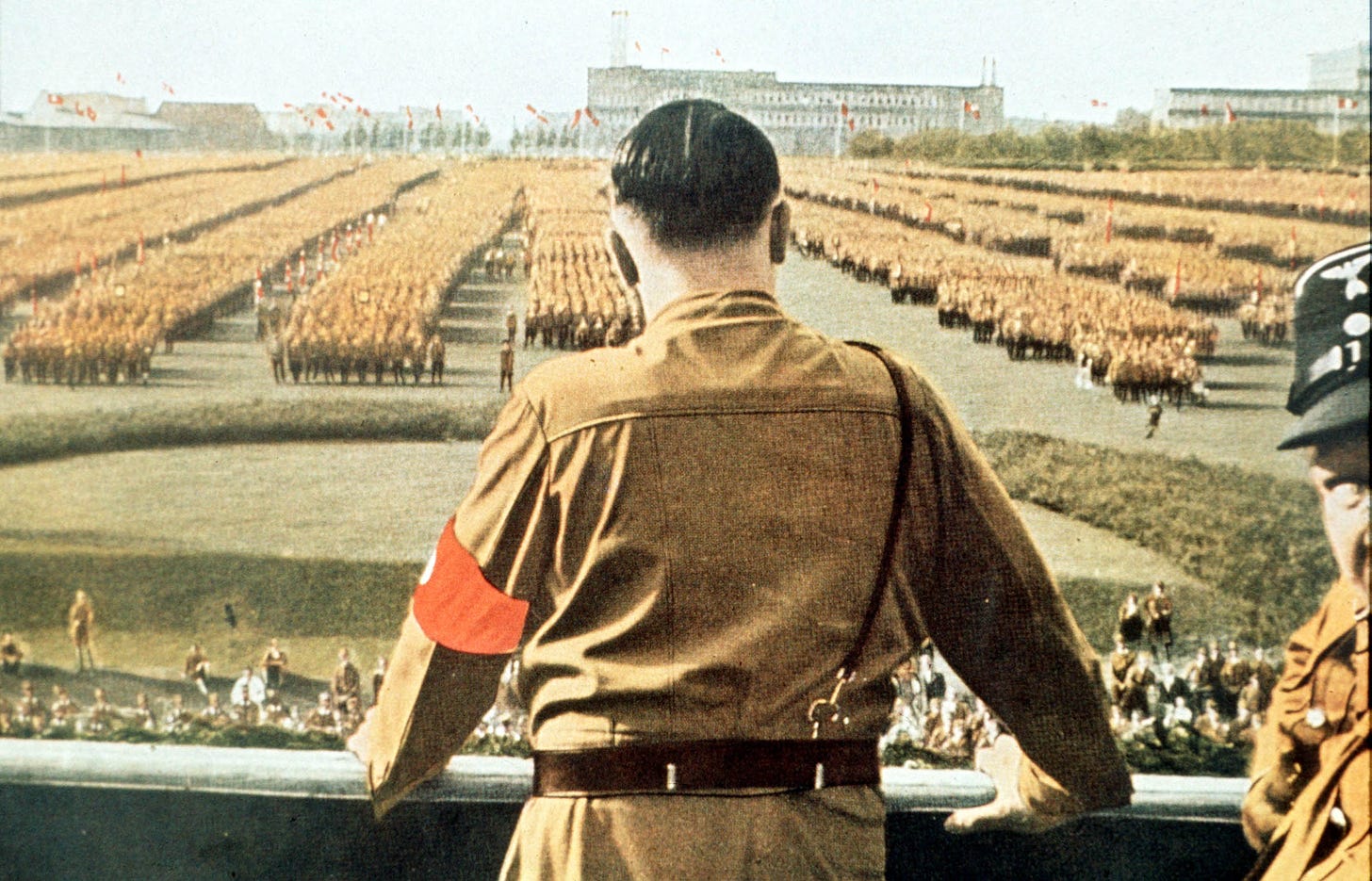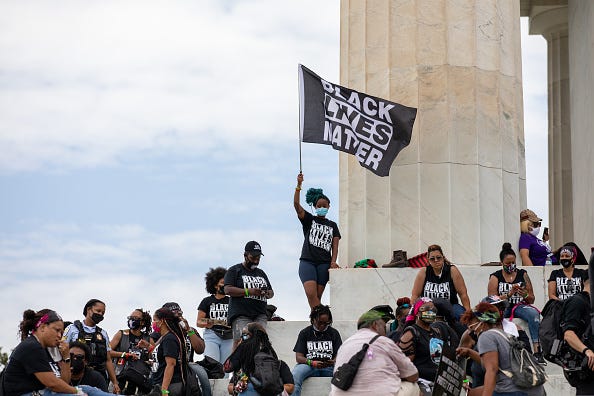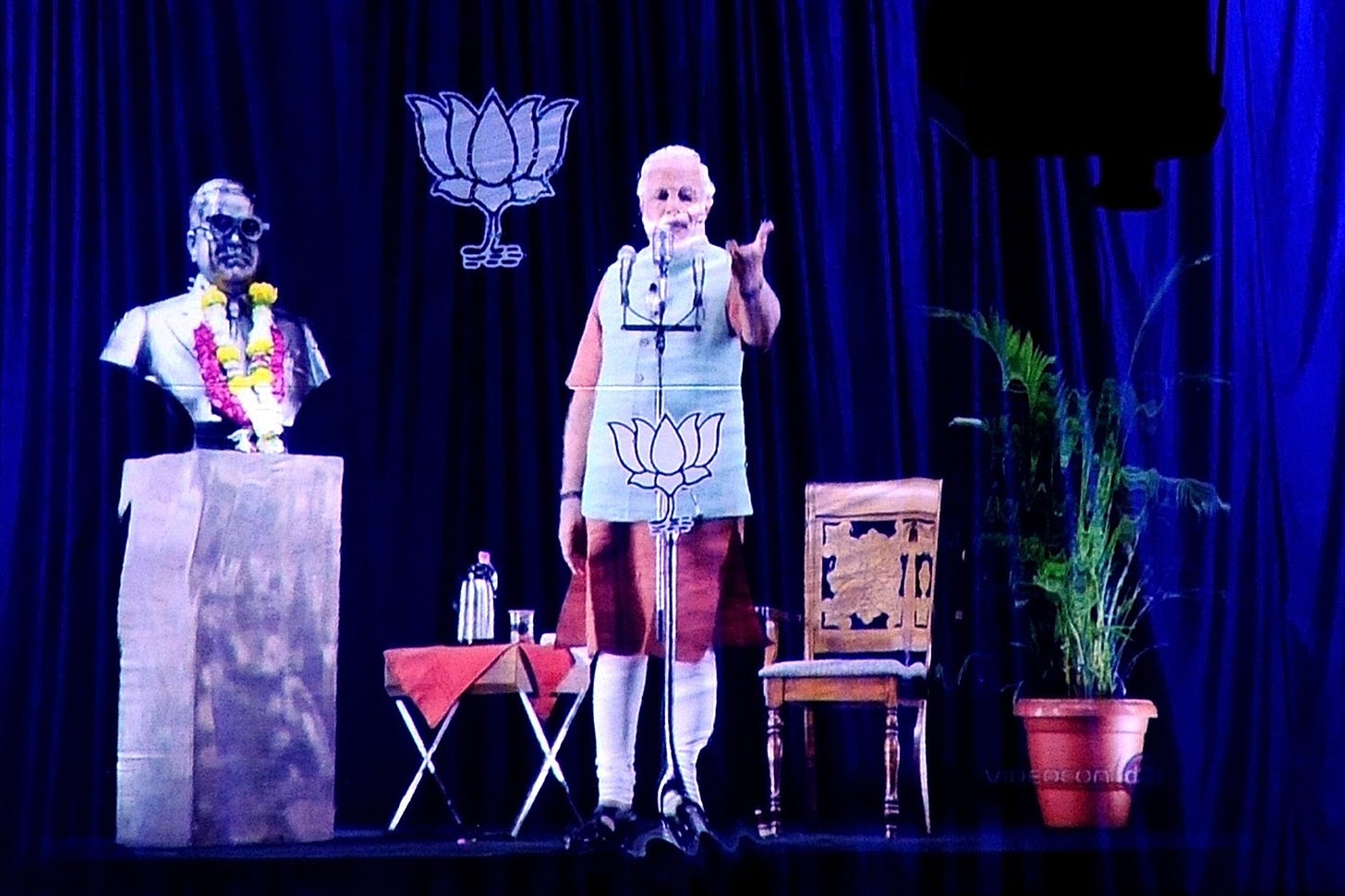Crowds have a starring role in the propaganda generated over a century of authoritarian history. Throngs listening to the leader at a rally, performing gymnastics for him and party officials (a Communist specialty), or lining the streets to cheer his motorcade - these are all "good crowds."
In authoritarian states and declining democracies, good crowds exist in relation to dangerous ones, like the hordes of foreigners reportedly breaching U.S. borders, or protesters said to be committing violent acts. Democratic erosion and the criminalization of dissent go hand in hand.
Old-school regimes and their state medias manufactured a ceaseless flow of good crowd images. The compliant civilian and military bodies on display legitimized the leader politically, their cheers and salutes maintaining the illusion that he ruled by popular will. They nourished his personality cult, renewing his power and feeding his ego.
Early on, Nazi Propaganda Minister Joseph Goebbels discovered that Adolf Hitler was a wooden speaker in a studio environment and required the energy and adulation of crowds to shine. Hitler's speeches thereafter were recorded at rallies and other public occasions, his performances enhanced by the feedback of his fans.

The images dictatorships circulated of good crowds show the affection such leaders elicited in their people. They tell us nothing, though, about the carrots and sticks such states employed to get people to attend those rallies, from the lure of trips to cities for provincial students and housewives, to the threat of police visits for those who did not lend their bodies to the work of creating authoritarian spectacle.
In Augusto Pinochet's Chile, making Sept. 11 (the date of the 1973 coup) a holiday freed up crowds to take a collective "oath of honor to the Fatherland." Those who declined to attend could lose their jobs or suffer other forms of retribution.
Decades later, rallies still produce a plethora of good crowd images, which is one reason that autocrats such as Indian Prime Minister Narendra Modi rely on them. Modi, an efficient propagandist, used holograms to appear at events held simultaneously in as many as 100 locations during the 2014 election.
The stakes of letting images of bad crowds proliferate are arguably higher for today's illiberal leaders, who typically operate within multi-party electoral systems that include independent media and a political opposition. Such heads of state often stay in power by rigging elections and by manipulating information about their popularity and competency. This makes the circulation of sights and sounds of mass disaffection, such as protests that draw attention to corrupt and negligent governance, more threatening.
That's why strongmen remove opponents from the public sphere, especially those who can conjure large crowds of protesters (one reason Russian President Vladimir Putin poisons and imprisons Alexei Navalny). It's why they often criminalize group gatherings, labeling protesters as terrorists to justify mass arrests (as do Turkish President Recep Tayyip Erdogan and Philippines President Rodrigo Duterte). And it's why they target journalists who write about pro-democracy protests or cover-ups of official incompetence, as the Chinese government does with Hong Kong and Beijing-based media.
The optics-obsessed Donald Trump knew how to cultivate good crowds and demonize dissenters. That helped him to remain popular despite election interference investigations, impeachment, and more. The need for a continuous stream of adoring crowd images is one reason Trump invested so heavily in rallies.
He held more than 150 of them during his presidency, over 40 of which took place during the pandemic. "They say no human being could do that," Trump said of the number of rallies he held soon after his own bout with coronavirus. With evidence of his negligent handling of the pandemic accumulating, he had plenty of motivation.
Trump devoted equal effort to spreading fear about the presence of bad crowds in America, with right-wing propagandists like Tucker Carlson of Fox News acting as his allies. Institutionalized racism had long ago created a double standard among police when dealing with crowds: a group of Black men probably meant gang activity, while a group of armed White men seemed unremarkable. Trump added a page from the autocratic playbook in labeling those who protested against police racism and brutality as terrorists, and in seeking to similarly brand leftist activists.
Trump is gone from the White House. Yet the current wave of state-level GOP-sponsored anti-protest legislation builds on his efforts to depict protesters as threats to the social order. A 2018 West Virginia law eliminated police liability for deaths caused when dispersing riots and “unlawful assemblies”; a February 2021 Oklahoma measure immunizes any drivers from criminal and civil charges if they "unintentionally" injure someone while "fleeing from a riot" and holding a "reasonable belief that they are in danger."
In between came two events that put the Republican Party into war mode. First, the Black Lives Matter protests, which were not merely the largest mass mobilizations in American history, but also 96% peaceful in nature. Second, the Jan. 6 Capitol riot. This shock event - seemingly, a bad crowd action par excellence - liberated the GOP to be openly lawless. No wonder the party and its media allies have doubled down on its voter suppression agendas, alliances with White extremists, and false depictions of urban America as collapsing into anarchy.
Around the world, criminalizing dissent has justified the removal of the wrong kinds of crowds from public view. It is now America’s turn to stand up for democracy by protecting the right to peaceful assembly.

Notes
My essay takes its title from Elias Canetti's 1960 book Crowds and Power, which is insightful about the relationship of despots and elites.
On Hitler: David Welch, The Third Reich: Politics and Propaganda (New York, 1993), 43. On Pinochet: Steve J. Stern, Battling for Hearts and Minds. Memory Struggles in Pinochet's Chile, 1973-1988 (Durham, 2006), 70-73.





Thank you so much for your work.
Could you join with other substack writers to condemn Trump's violent hate speech and to pressure prominent and elected Republicans to make their support of him contingent upon upholding norms against vicious and provocative language and memes? Very directed criticism affected Ronna McDaniels' hiring: an intense, coordinated effort to condemn intentionally false or hateful political speech might work to display its ugliness, to slow and discourage its use.
If we all rise up together, it may convince even those who seek to further their own careers by support of Trump stand up against his dangerous behaviors.
Trump listening to the crowd is like pouring kerosene on a fire! If the crowd isn’t adequate, he exaggerates the crowd size to accommodate his desires‼️That’s the narcism and egomania igniting!